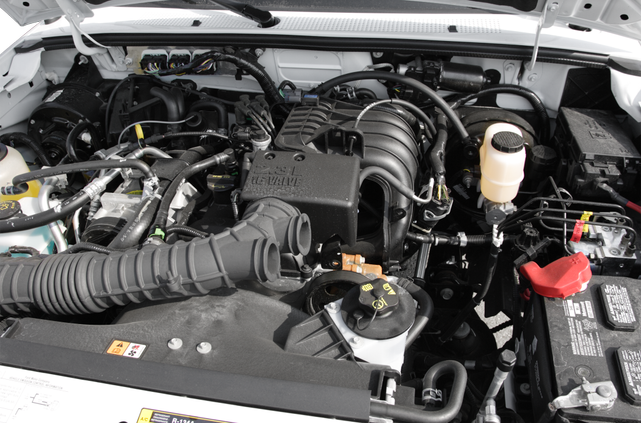What Makes a Car Engine Run Efficiently: Leading Tips for Optimum Care
The smooth operation of a vehicle engine is basic to both performance and durability, making optimum treatment an important obligation for vehicle proprietors. What specific steps should you prioritize to ensure your engine remains in peak problem?
Regular Oil Adjustments
One of one of the most crucial elements of car maintenance is ensuring your engine receives normal oil changes. Engine oil lubricates interior parts, lowers friction, and assists maintain optimal operating temperatures. Over time, oil degrades as a result of warmth, pollutants, and the natural results of burning, causing minimized efficiency and possible engine damage.
The majority of suppliers advise changing the oil every 5,000 to 7,500 miles, yet this period can differ based upon driving problems and oil type. For instance, artificial oils might enable longer intervals between changes. Routine oil modifications not only boost engine performance but also enhance gas effectiveness, as clean oil promotes smoother operation.
Neglecting oil modifications can cause sludge build-up, which harms blood circulation and can lead to severe engine issues. It is vital to examine oil degrees consistently and keep track of for any unusual adjustments in color or uniformity, which might indicate contamination or deterioration.

Maintaining Coolant Degrees
Keeping appropriate coolant degrees is essential for avoiding engine getting too hot and ensuring ideal performance. The coolant, usually a blend of water and antifreeze, circulates through the engine, taking in heat and preventing thermal stress and anxiety. Not enough coolant can lead to boosted engine temperature levels, which may cause extreme damage and even overall engine failure.
To keep optimal coolant degrees, regularly evaluate the coolant tank, usually situated in the engine bay. Ensure the coolant is filled to the suggested mark, as indicated in your automobile's owner guidebook. It is a good idea to inspect the levels at the very least when a month or soon trips, especially during extreme weather.
If you observe that the coolant degree is regularly reduced, there may be a leak in the air conditioning system, which ought to be attended to quickly to stop additional issues. 2.2 ford ranger engine. Furthermore, purging the coolant system every a couple of years can aid eliminate any kind of accumulated debris and ensure effective heat exchange
Monitoring Air Filters

It is advised to examine the air filter every 12,000 to 15,000 miles, or more frequently if driving in adverse or messy conditions. An easy aesthetic assessment can commonly reveal whether the filter is dirty or damaged. If the filter shows up tarnished or has noticeable dirt buildup, it ought to be changed promptly.
Making use of a top notch air filter designed for your details vehicle model can better improve engine performance. Furthermore, some vehicles may take advantage of reusable filters that can be cleaned and re-installed, providing a eco pleasant helpful resources and cost-efficient alternative.
Inspecting Spark Plugs
Ignition system are crucial components of a car's ignition system, directly impacting engine performance and effectiveness. They develop the trigger that stirs up the air-fuel mixture in the burning chamber, promoting the engine's power generation. Routine inspection of stimulate plugs is important for preserving optimum engine function and avoiding possible issues.
During an inspection, try to find indicators of wear or damages, such as fractures, carbon accumulation, or excessive void widening. A healthy trigger plug commonly shows a light brownish or tan color. Dark soot or oil deposits can indicate incorrect burning, while a blistered or white appearance may recommend overheating. Both conditions need prompt attention to stop further engine damages.
It's suggested to evaluate ignition system every 30,000 miles, or as recommended in your vehicle's proprietor guidebook. Additionally, consider replacing them according to the maker's guidelines, as worn or old ignition system can result in misfires, lowered gas efficiency, and raised emissions.
Monitoring Tire Pressure
Under-inflated tires can lead to lowered fuel performance, boosted tire wear, and endangered handling. Routine monitoring of tire stress is important for optimal vehicle operation.
Tire stress should be examined at the very least once a month and eventually trips. Use a trustworthy tire stress scale to measure the pressure when the tires are cold, preferably prior to the automobile has actually been driven for a minimum of three hours. Refer to the car's proprietor guidebook or the placard situated on the driver's side door jamb for the producer's suggested pressure levels.
It is very important to note that tire stress can change with modifications in temperature; a decrease of 10 ° F can result in a 1-2 psi decline in stress. Additionally, visually check tires for any indications of wear or damage throughout your monitoring routine. Preserving correct tire stress not just improves automobile safety however additionally boosts fuel performance and prolongs tire life, ultimately adding to a smoother engine efficiency.
Conclusion
To conclude, preserving an auto engine's smooth operation needs diligent attention to a number of vital variables. Normal oil modifications, correct coolant degrees, clean air filters, properly maintained spark plugs, and optimal tire pressure collectively contribute to improved efficiency and longevity. Complying with these maintenance methods not only enhances fuel efficiency but likewise advertises a visit more secure driving experience. Eventually, a proactive approach to engine care is crucial for making sure dependability and functionality over time. 2.2 ford ranger engine.
One of the most crucial aspects of vehicle maintenance is ensuring your engine obtains routine oil modifications. Engine oil lubricates internal elements, lowers rubbing, and helps keep optimum operating temperatures. Routine oil adjustments not only boost engine performance however likewise boost fuel effectiveness, as tidy oil promotes smoother procedure.
Not enough coolant can lead to increased engine temperature levels, which might cause severe damages or even overall engine useful source failing.

Comments on “The 2.2 Ford Ranger Engine: Ideal for Towing, Off-Roading, and Everyday Use”